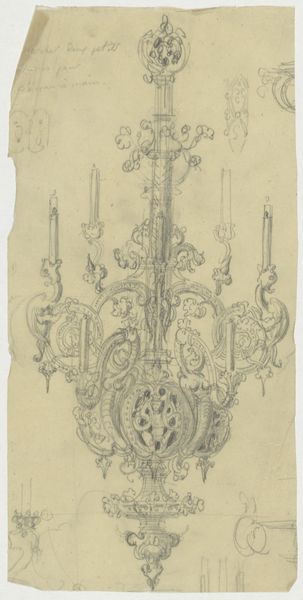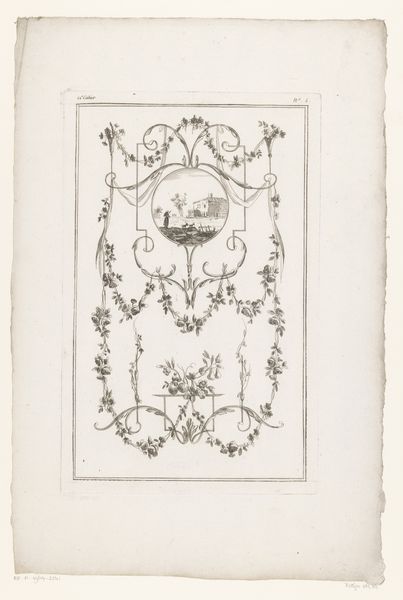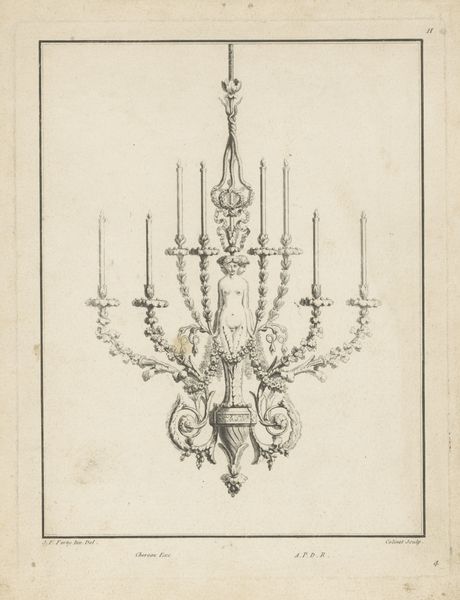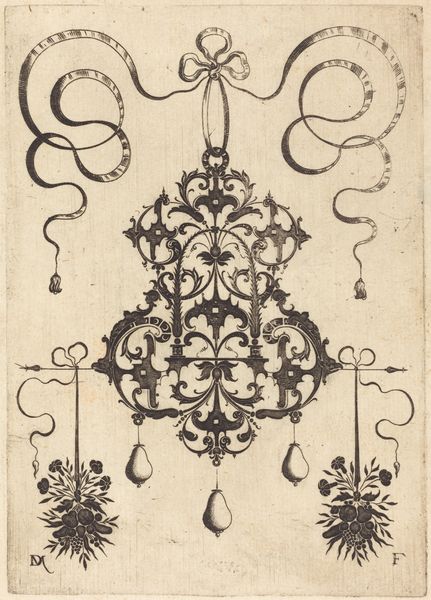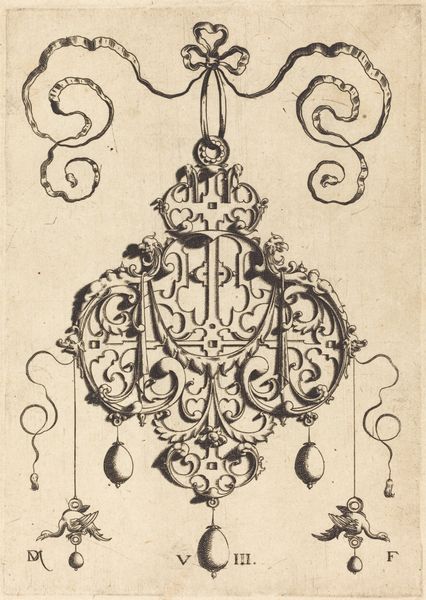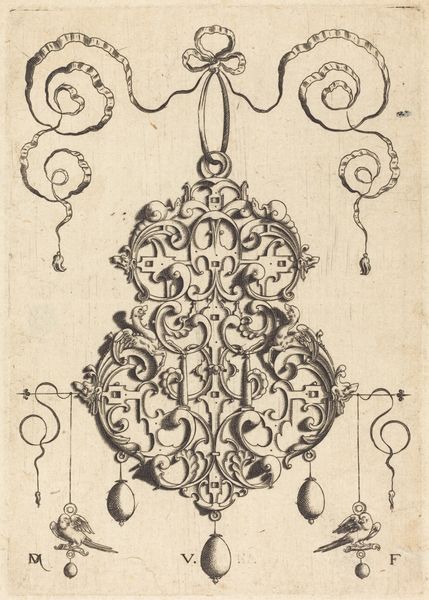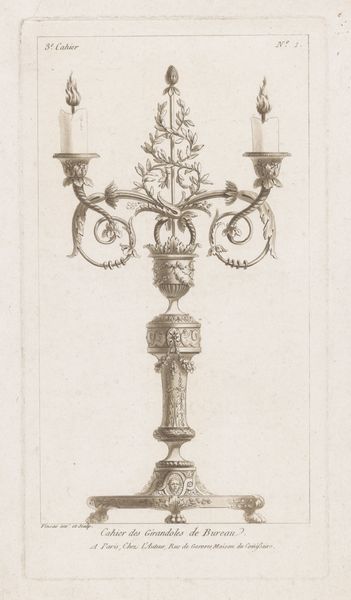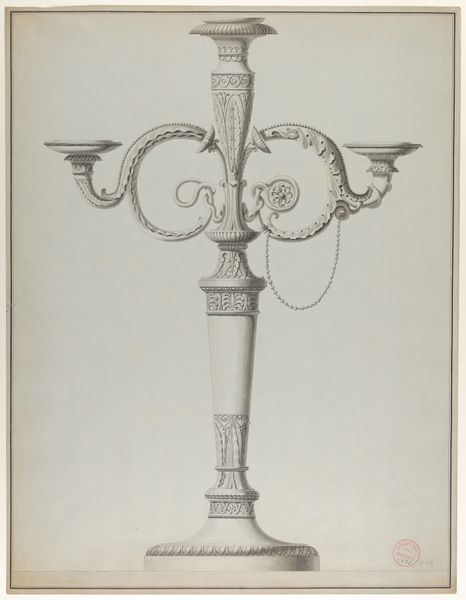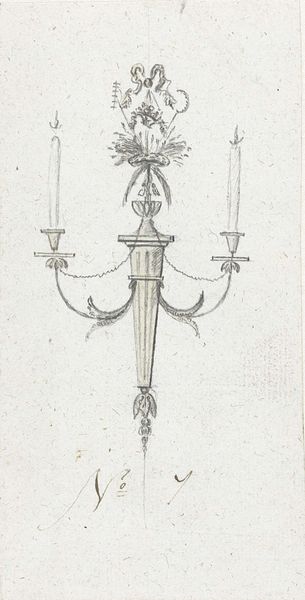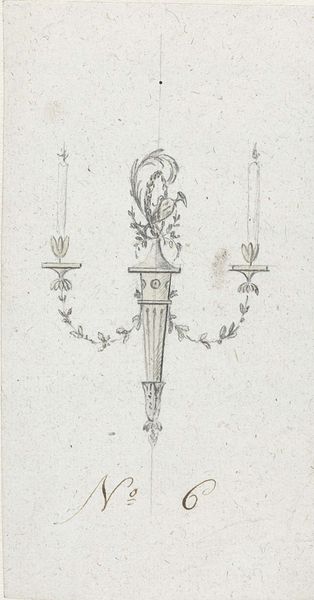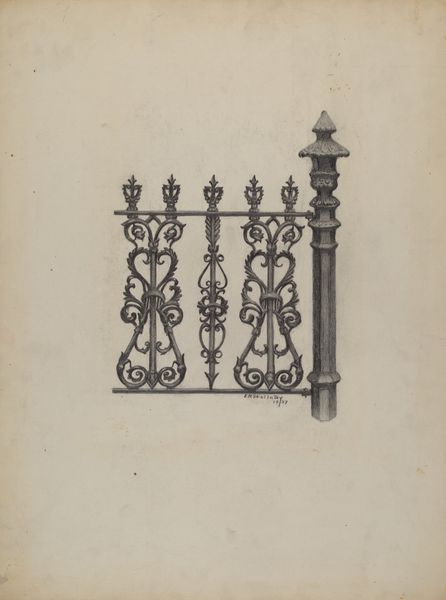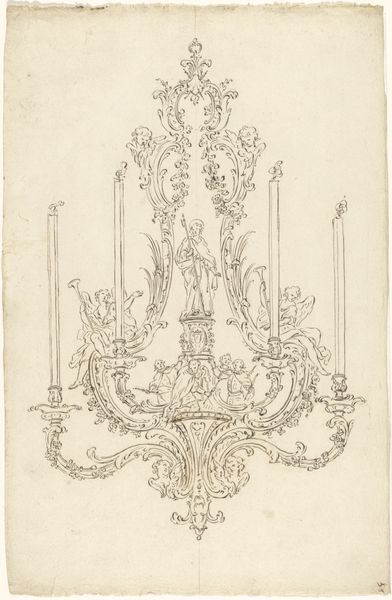
Design for a Girandole Composed of Three Clasping Arrows and Candle-branches Terminating in Cockerel Heads 1743 - 1797
0:00
0:00
Dimensions: sheet: 15 15/16 x 10 1/2 in. (40.5 x 26.6 cm)
Copyright: Public Domain
Curator: What a whimsical design. This is Sir William Chambers’ “Design for a Girandole Composed of Three Clasping Arrows and Candle-branches Terminating in Cockerel Heads,” made between 1743 and 1797. Editor: My initial impression is that it has a light touch, almost ethereal. The symmetry and detailed linework give it a refined elegance. But those cockerel heads are a bit... much. Curator: Those details reflect the opulence of the Baroque style, focusing on elaborate ornamentation. Consider the interplay of form—the sharp arrows versus the flowing curves of the candle branches. Semiotically, arrows could represent direction and power, whilst roosters… Editor: Roosters were a symbol of vigilance and status—fitting for an elaborate lighting fixture likely commissioned for a grand hall. How would that type of ornamental girandole have been produced, and by whom? Was Chambers responsible for everything, or were specialized artisans involved? Curator: Most likely specialist artisans handled each material according to established methods of crafting precious metals and glass—each material offering diverse artistic possibility. This highlights an essential conversation surrounding Chambers and labor within art during that time. Editor: Exactly! And what about the materials themselves? The drawing gives an impression of metal—probably gilded bronze or silver for the finished piece—paired with crystal for the pendants to catch and refract the candlelight. Who sourced the materials? Who mined and processed them? What was the ecological cost? Curator: The material contrasts are essential to appreciating the art object's design and presence, don't you think? In this drawing, it seems more concerned with the aesthetic, where each detail comes together harmoniously as an idealized form. Editor: Indeed, both artistic intention and socioeconomic factors combine and produce art; an artwork like this can represent many factors. Thanks to a more insightful perspective, I appreciate its original role more! Curator: And now, the work, and your own response to it, has acquired even greater symbolic significance, as well as further interpretive layers for our listeners.
Comments
No comments
Be the first to comment and join the conversation on the ultimate creative platform.
